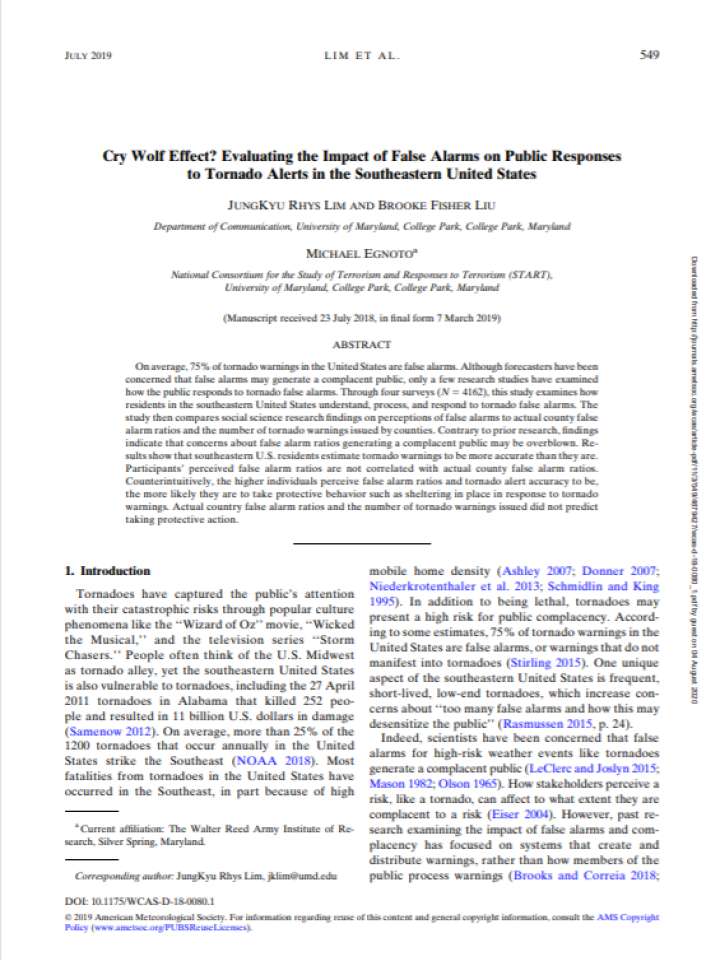Cry wolf effect? Evaluating the impact of false alarms on public responses to tornado alerts in the Southeastern United States
On average, 75% of tornado warnings in the United States are false alarms. Although forecasters have been concerned that false alarms may generate a complacent public, only a few research studies have examined how the public responds to tornado false alarms. Through four surveys (N = 4162), this study examines how residents in the southeastern United States understand, process, and respond to tornado false alarms. The study then compares social science research findings on perceptions of false alarms to actual county false alarm ratios and the number of tornado warnings issued by counties. Contrary to prior research, findings indicate that concerns about false alarm ratios generating a complacent public may be overblown. Results show that southeastern U.S. residents estimate tornado warnings to be more accurate than they are. Participants’ perceived false alarm ratios are not correlated with actual county false alarm ratios. Counterintuitively, the higher individuals perceive false alarm ratios and tornado alert accuracy to be, the more likely they are to take protective behavior such as sheltering in place in response to tornado warnings. Actual country false alarm ratios and the number of tornado warnings issued did not predict taking protective action.
Explore further
